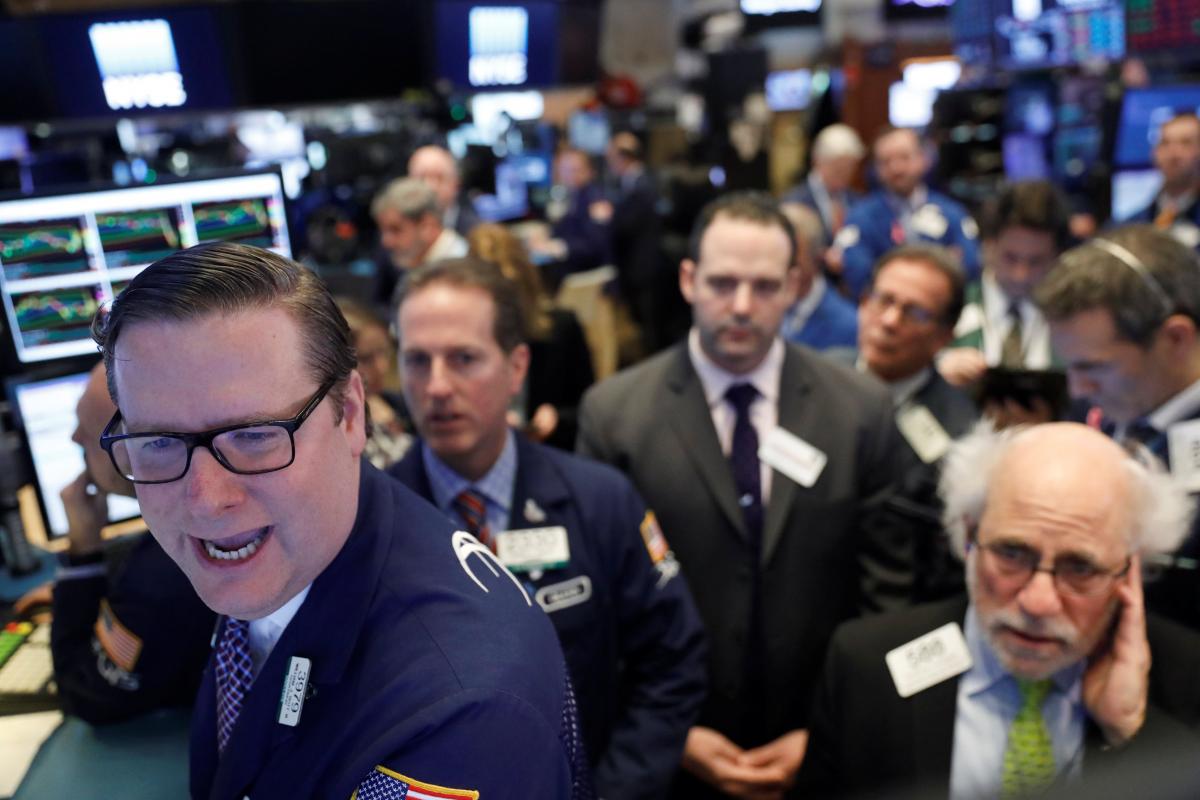
NEW YORK (Reuters) – For nearly nine years, the global hunt for yield sent you to one place: the U.S. stock market.
On Friday, stocks took their biggest pounding since September 2016, before U.S. President Donald Trump was elected, after the U.S. government’s monthly payrolls report showed the biggest wage gains for workers since 2009. That convinced investors the threat of inflation, long tame since the 2007-2009 recession, is growing larger, sending bond yields soaring.
With central banks having taken extraordinary measures to combat the financial crisis, driving interest rates to record lows and making safe assets like U.S. Treasuries a scarcity, investors of all stripes were forced to turn to equities.
But when what had been a stealth increase in U.S. rates over several months suddenly broke out into the open in the last week, investors were jolted awake to a new reality: stocks are no longer the only solution for finding yield.
“One of the key mantras of the bull market has been stocks are inexpensive relative to bonds, and bonds are getting cheaper, especially at these highs,” said Michael O‘Rourke, chief market strategist at JonesTrading in Greenwich, Connecticut. “So people are taking profits and they probably should be.”
With the yield on the benchmark 10-year Treasury note on pace to top 3.5 percent this year for the first time since April of 2011, risk-free bonds are becoming an increasingly attractive place for yield-focused investors.
At the current forward price-earnings ratio of 18.2, according to Thomson Reuters proprietary research, the S&P 500 .SPX index’s earnings yield is 5.5 percent, well below the historic norm of around 6.7 percent. With bond yields rising across the spectrum, the 5.5 cents of profit that underpins every $1 in share prices on average begins to look thin by comparison.
“We don’t have a line in the sand but 10-year Treasuries near 3 percent are starting to look a lot more attractive,” said Mike Dowdall, a portfolio manager with BMO Global Asset Management.
That rise in yields prompted a broad sell-off in stocks on Friday, as investors reacted to data from the U.S. Labor Department showing wages last month recorded their largest annual gain in more than 8-1/2 years.
SECTOR DECLINES
There already are signs investors are moving into actively managed stock funds in order to sidestep the impact of rising rates. U.S.-based active stock mutual funds, which lost $7.2 billion in outflows as investors moved toward “passive” stock exchange traded funds (ETFs), attracted $2.4 billion in new assets during the week that ended Wednesday, according to data from Lipper.
At the same time, the lowest end of the credit spectrum has been facing cash withdrawals as rising rates increase the cost of refinancing debt. In the week ended Wednesday, U.S.-based high-yield “junk” bond funds posted outflows of $1.8 billion, their third consecutive week of cash withdrawals, according to Lipper. The four-week moving average for the sector is negative $825 million, the largest such figure since early December.
Still, some have piled in even as risks rose. U.S. fund investors cashed out of cash funds and stocked up on stocks in the latest week, Lipper data showed.
Earlier in the week, positioning data showed hedge funds and other big speculative investors to have their largest net long exposure to the S&P 500 since September. Weekly commitments of traders data released Friday by the Commodity Futures Trading Commission showed that as of Jan. 30, so-called noncommercial investors had modestly raised their net long positions for a third straight week.
Stocks sensitive to rates are leading the market lower for the year. Real estate stocks in the S&P 500 are down 3.7 percent over the last month, while utilities are down 4.6 percent over the same time.
Consumer discretionary stocks, which tend to outperform during periods of inflation due to rising wages, are up 8 percent over the same time.
Fund managers say they expect that other growth-oriented sectors such as technology and financials will continue to outperform, thanks in part to a pickup in inflation and the Republican-led tax overhaul that slashed corporate rates.
Overall, 78.1 percent of companies in the S&P 500 have reported fourth-quarter earnings above analyst expectations, compared with an average of 72 percent over the last year, according to Thomson Reuters data.
“You’re getting a pickup in economic growth and in wages, so that makes the growth sectors still the place to be,” said Margaret Patel, a senior portfolio manager at Wells Fargo Funds who runs a portfolio of both equities and fixed income. “Even Treasury yields of 3 percent have never been an impediment to the stock market doing better.”
 0 comments
0 comments





